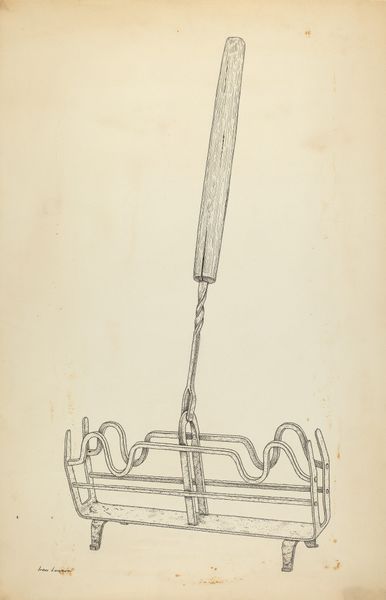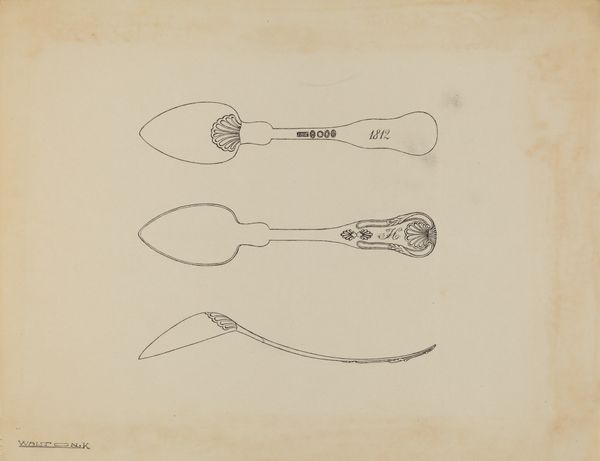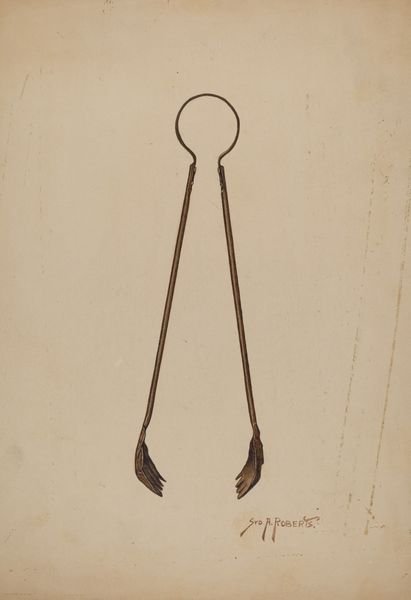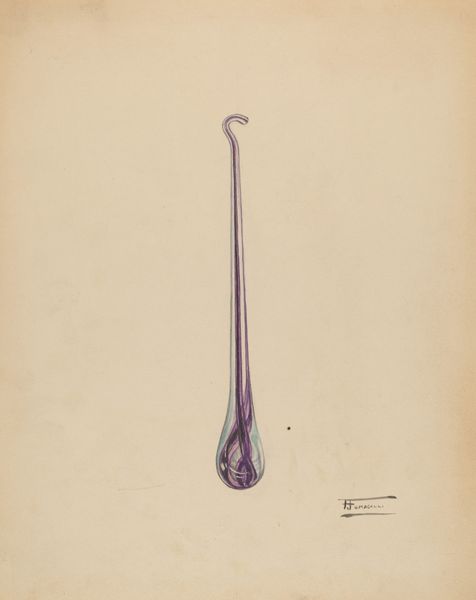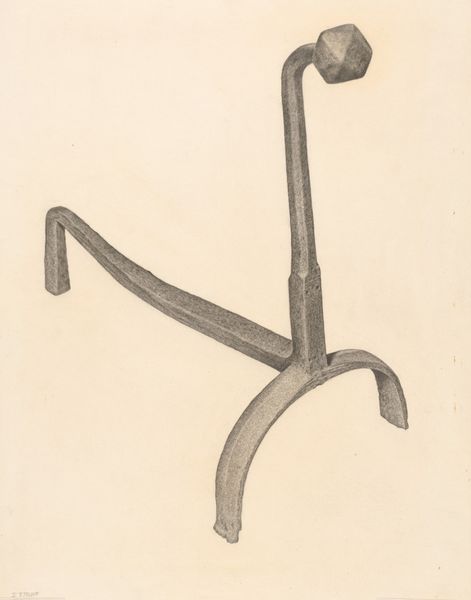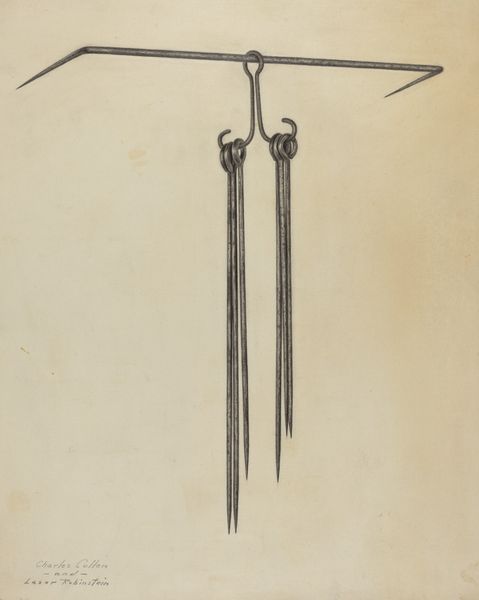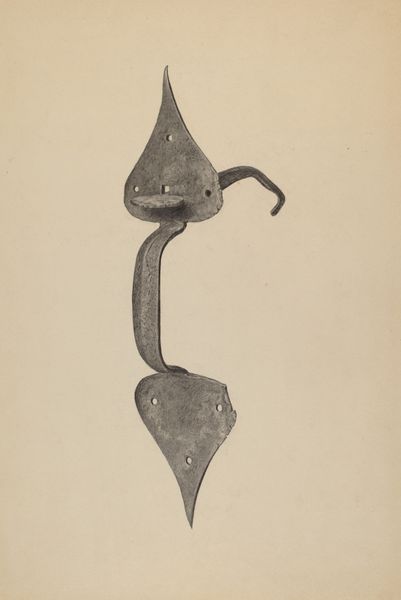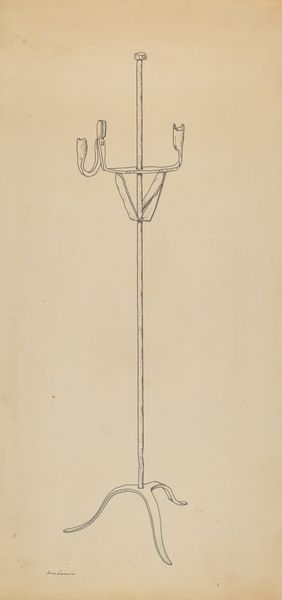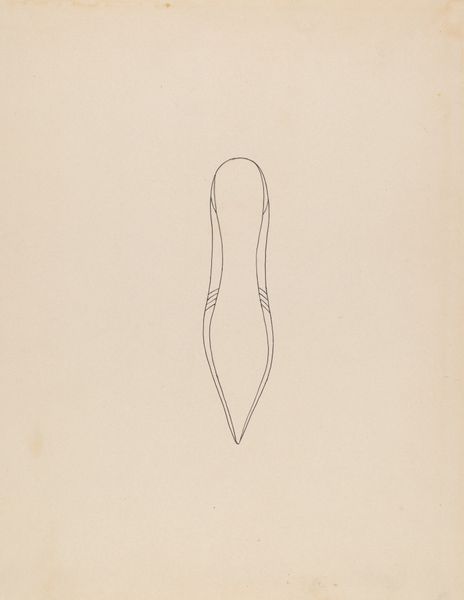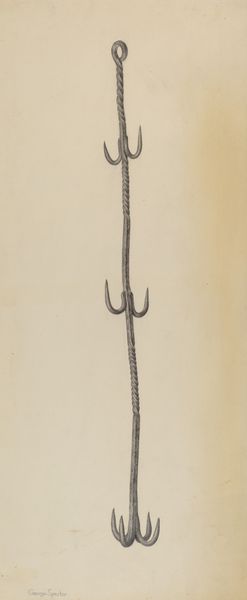
drawing, ink
#
drawing
#
form
#
ink
#
geometric
#
line
Dimensions: overall: 29.2 x 22.9 cm (11 1/2 x 9 in.)
Copyright: National Gallery of Art: CC0 1.0
Curator: Let's turn our attention to this striking ink drawing, "Decoy (Red-Wing Black Bird)," created by Charles Garjian sometime between 1935 and 1942. Editor: Mmm, spare, isn't it? Immediately brings to mind diagrams, like something from a naturalist's notebook. Almost clinical in its simplicity. There’s something forlorn, almost tragic about this bird's skeletal elegance. Curator: It certainly strips away any romanticism. This work, I think, can be situated within the context of early 20th-century American art's fascination with both the natural world and a more streamlined aesthetic influenced by industrial design. Bird decoys themselves occupied an interesting position – tools for manipulating nature, yet also beautifully crafted objects. Editor: Manipulating nature, yes, that resonates strongly here. It is a geometric abstraction, sure, yet those clean lines, that central spine... it reminds me of diagrams of aerodynamics or even a spacecraft. All very 20th century! Do you think the artist was commenting on the relationship between technology and our ideas about nature? Curator: Precisely! Artists were acutely aware of their own role within an increasingly industrialized society. The decoy becomes a potent symbol. Mass production began influencing more artists that leaned toward nature illustrations, impacting not just aesthetics but the way information about nature was disseminated. Editor: Makes you think about what’s missing, too – the red wing, the vibrant song. All the life drained out, leaving only a… skeleton. Kind of brutal when you think about the bird’s real function in its environment. Curator: Right. The use of simple line drawings in the illustration reflects broader shifts toward modernist aesthetics which are reflected in the artwork. Garjian captures an intriguing paradox. Editor: That makes it almost unbearably poetic. This ghostly outline becomes an invitation, not to some mimetic likeness, but toward thinking on deeper relationships with these nonhuman critters and their fragile habitat. Curator: Absolutely. It reflects both scientific interest and the changing artistic vision towards minimalism. Editor: Food for thought indeed. What an unusual conversation-starter Garjian's offered.
Comments
No comments
Be the first to comment and join the conversation on the ultimate creative platform.
